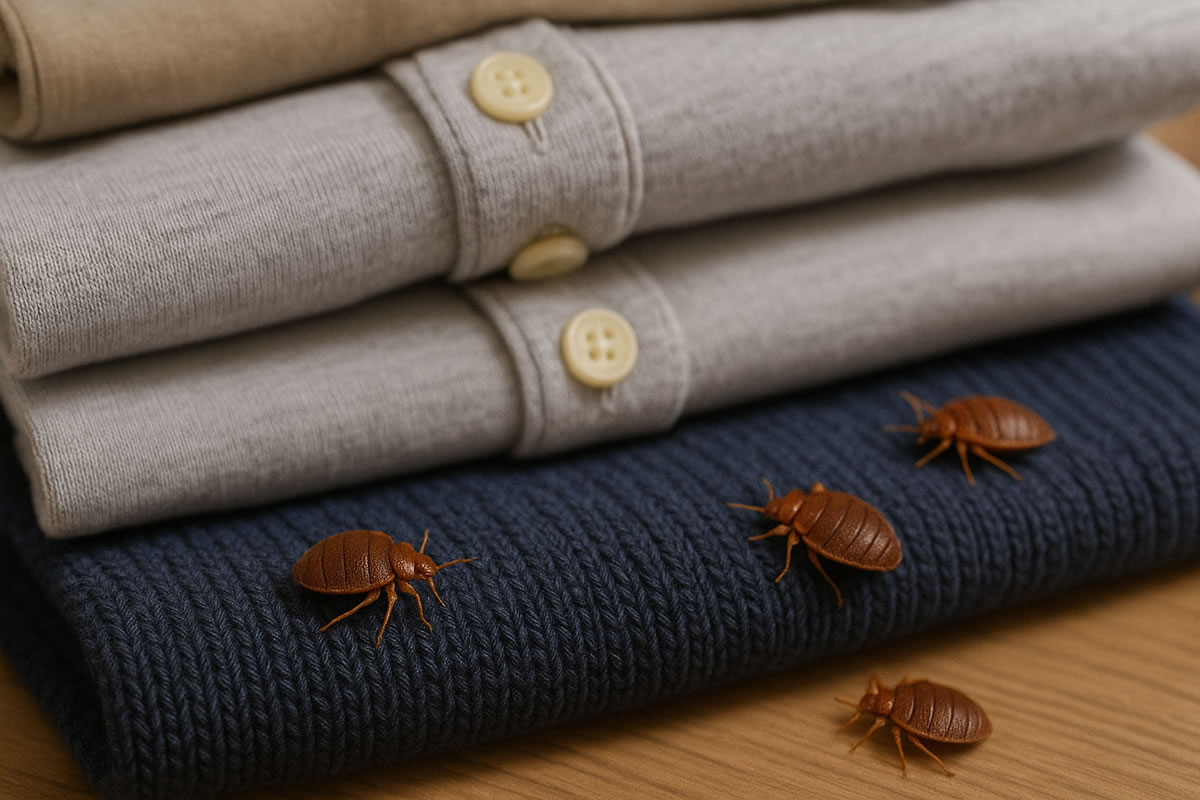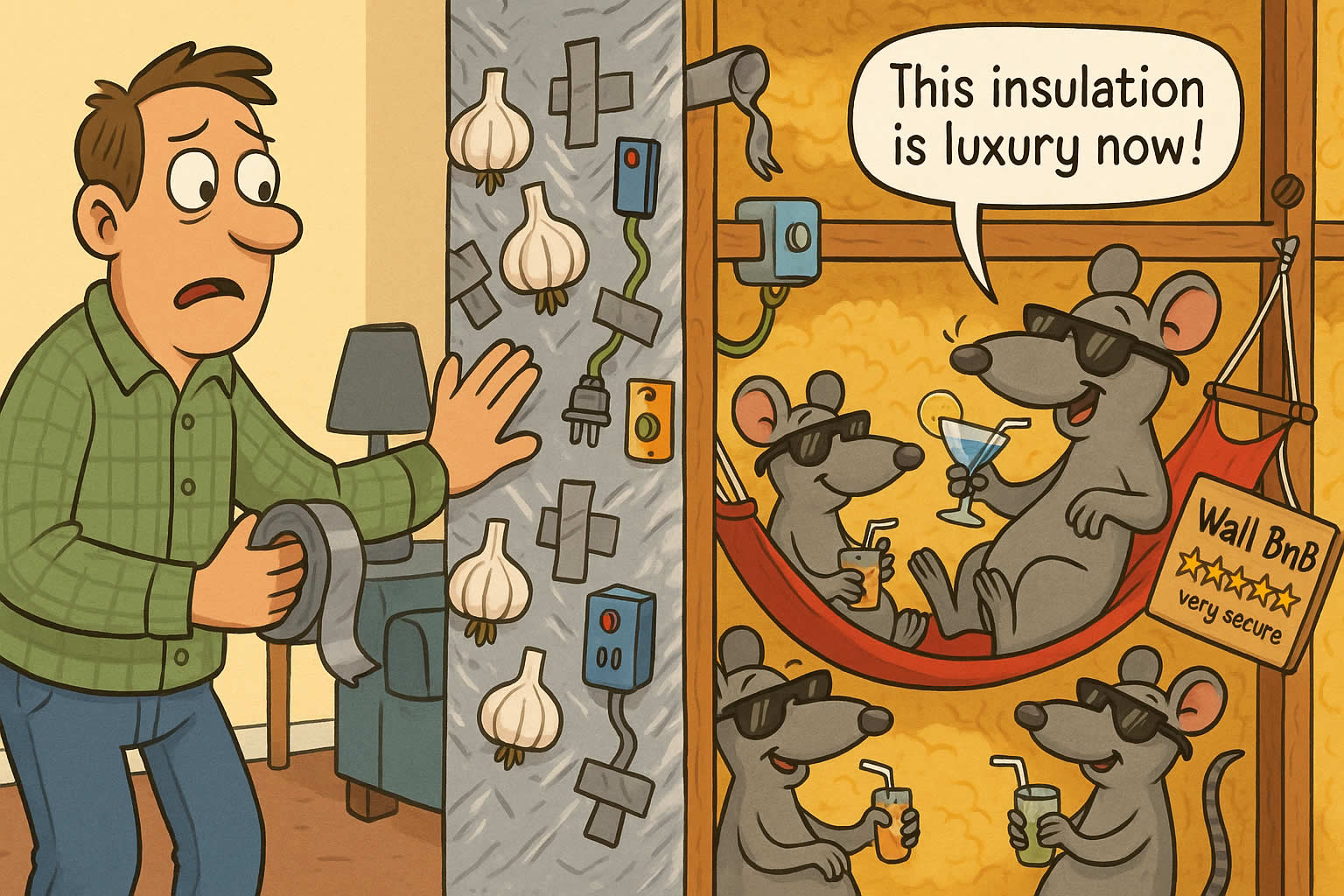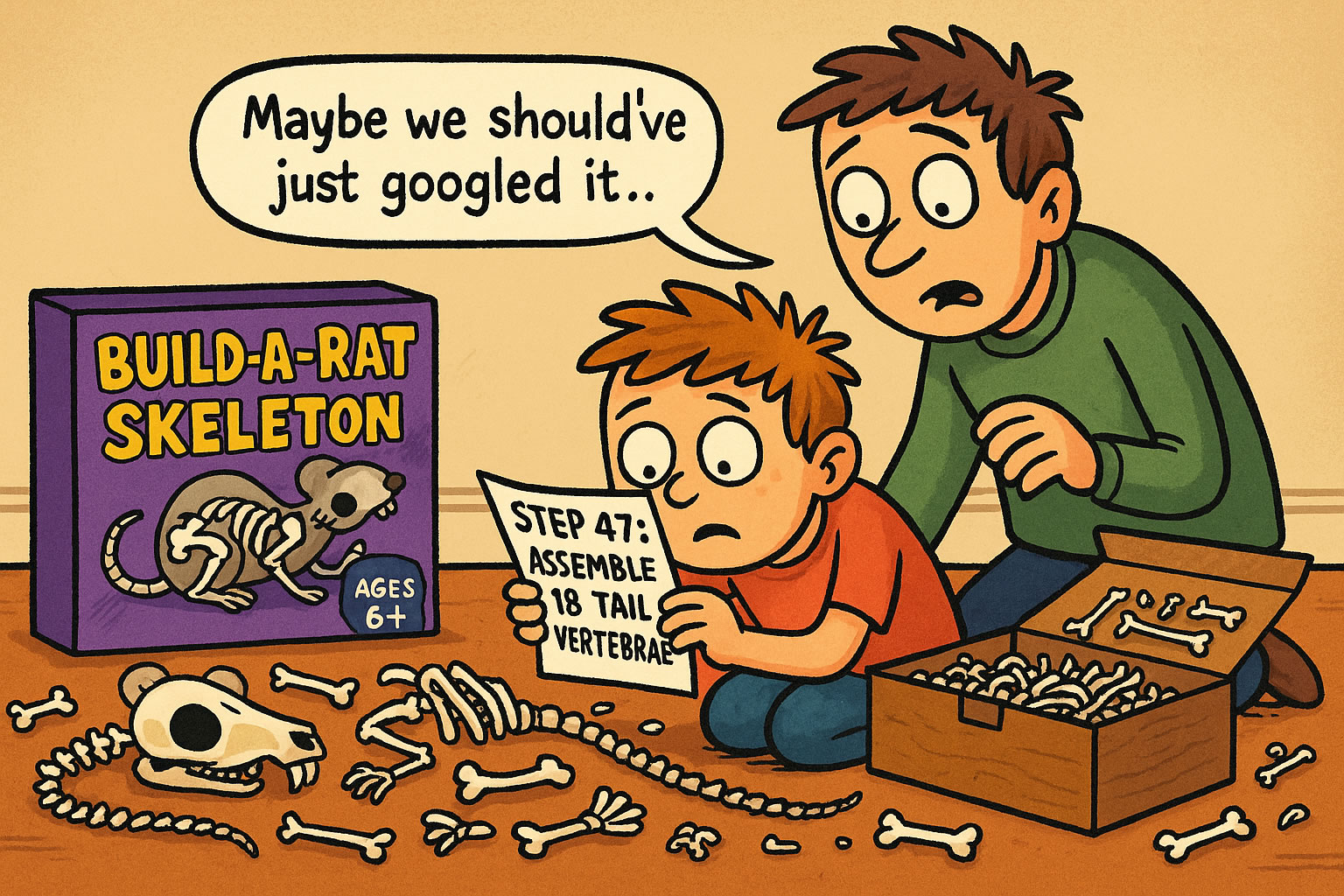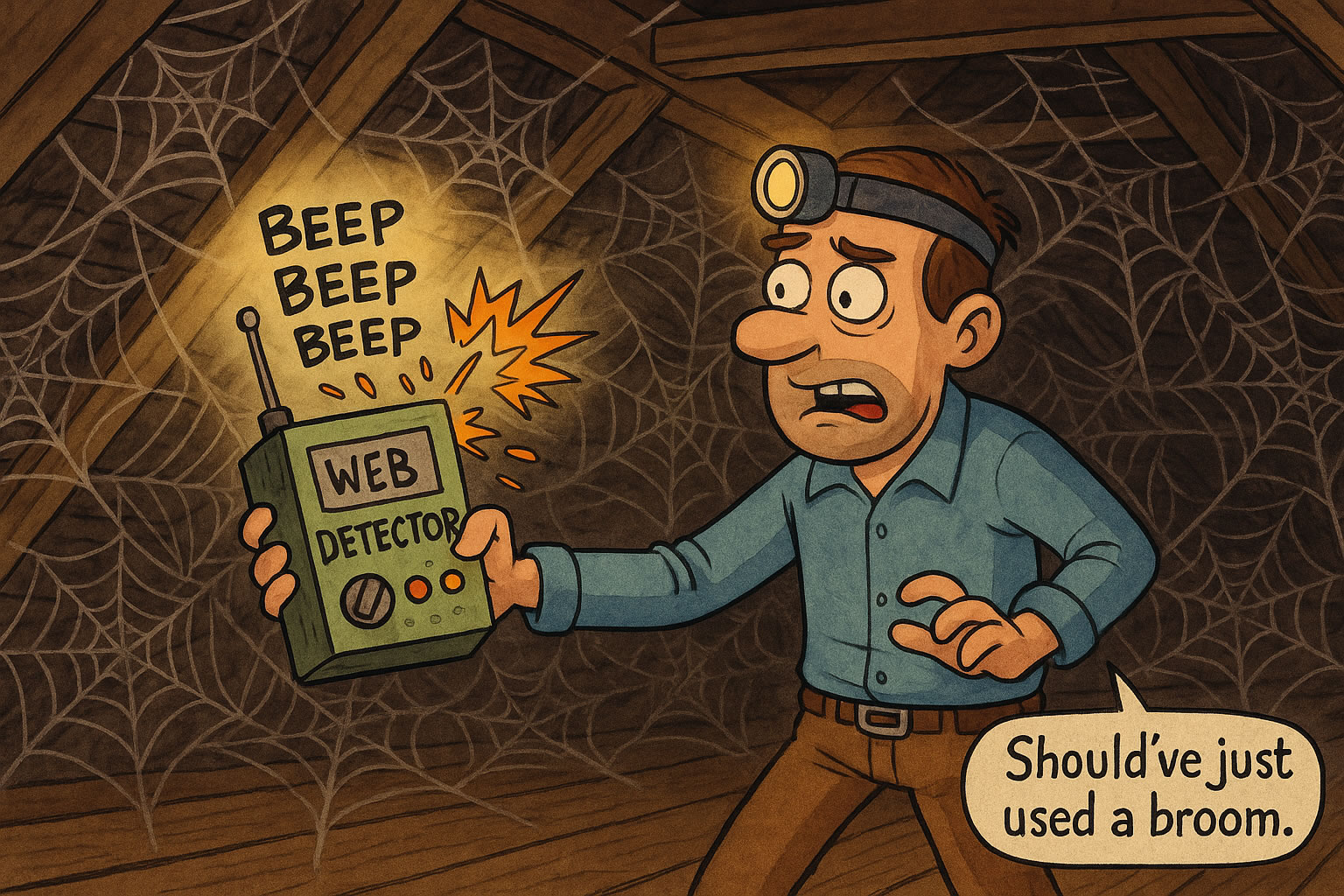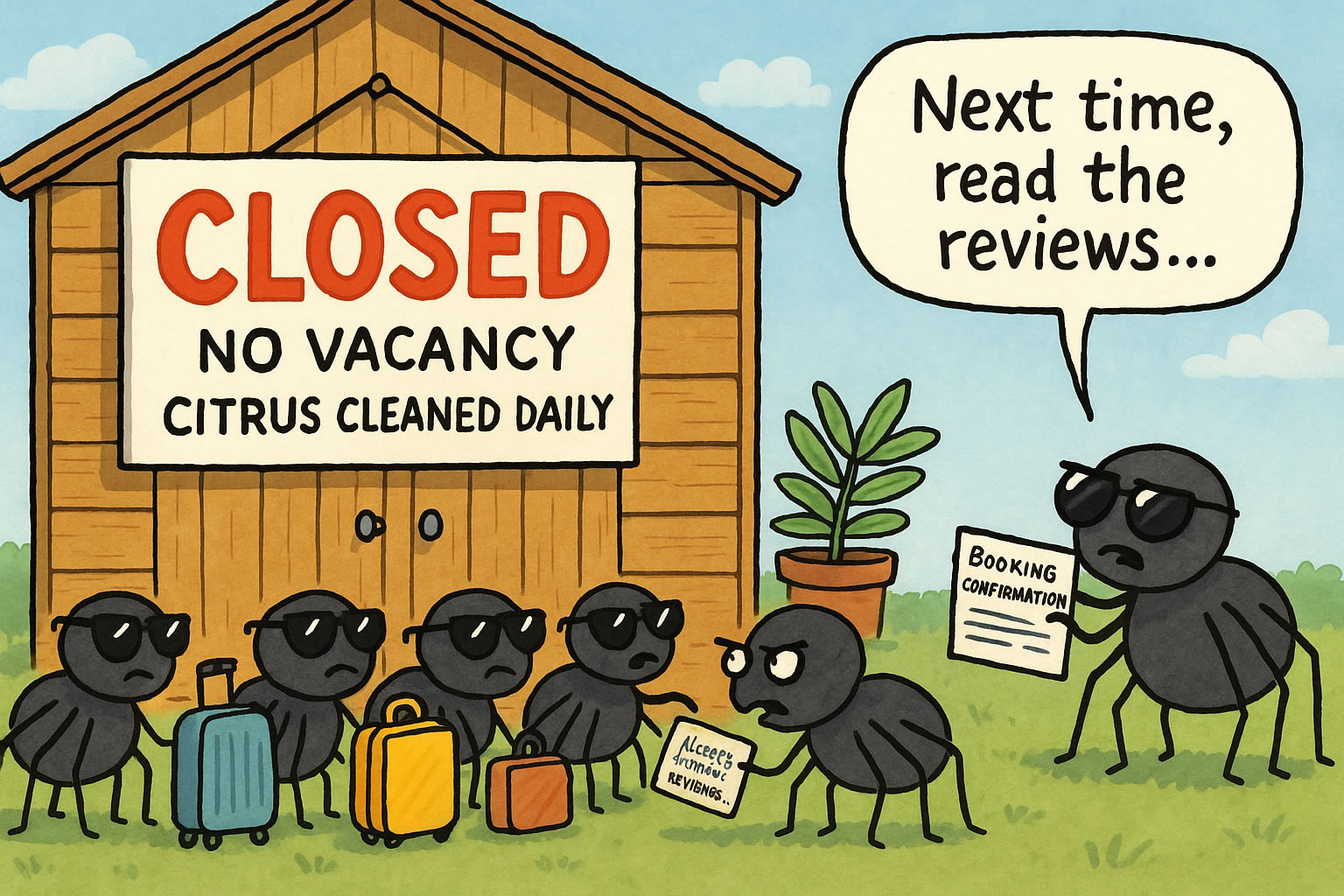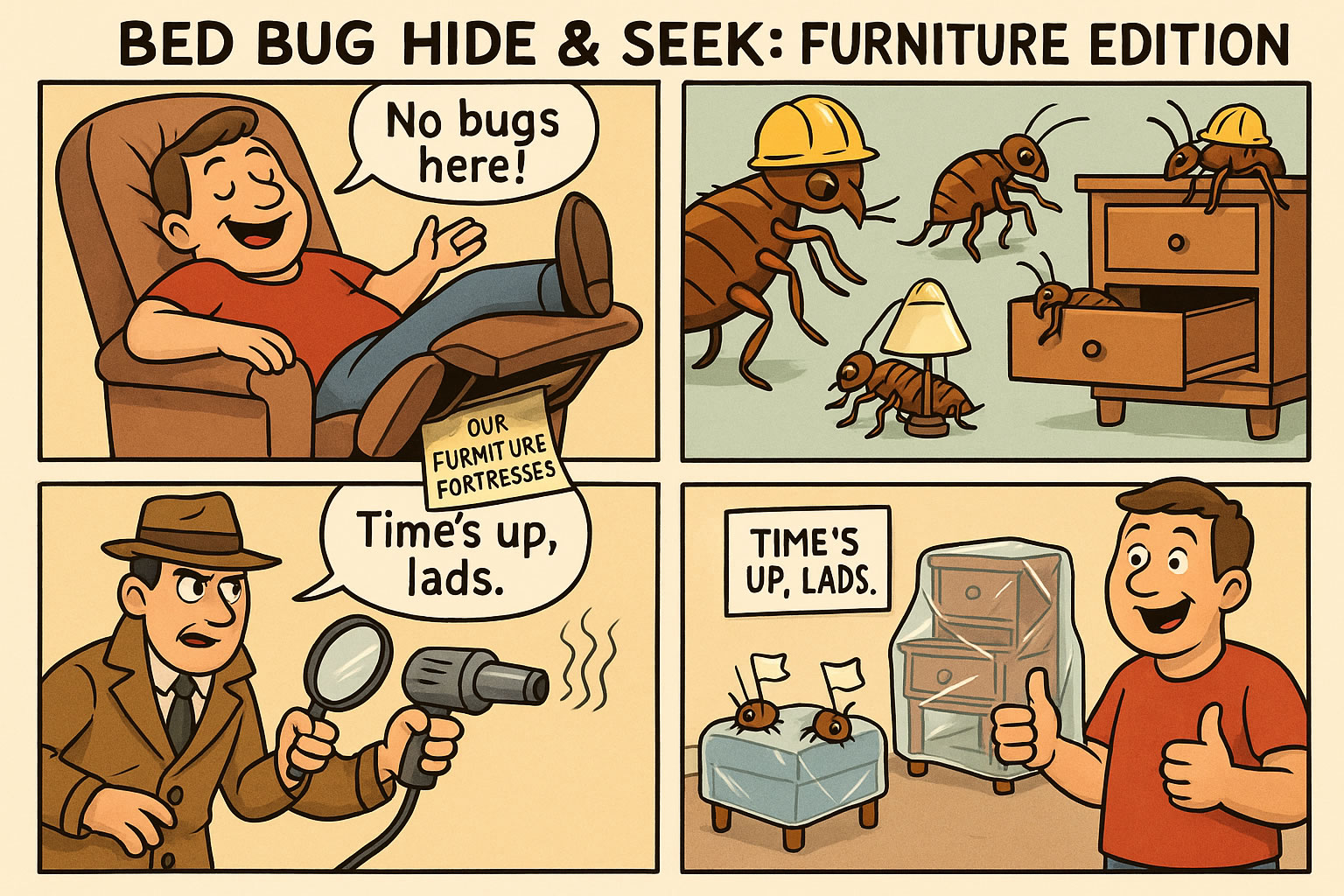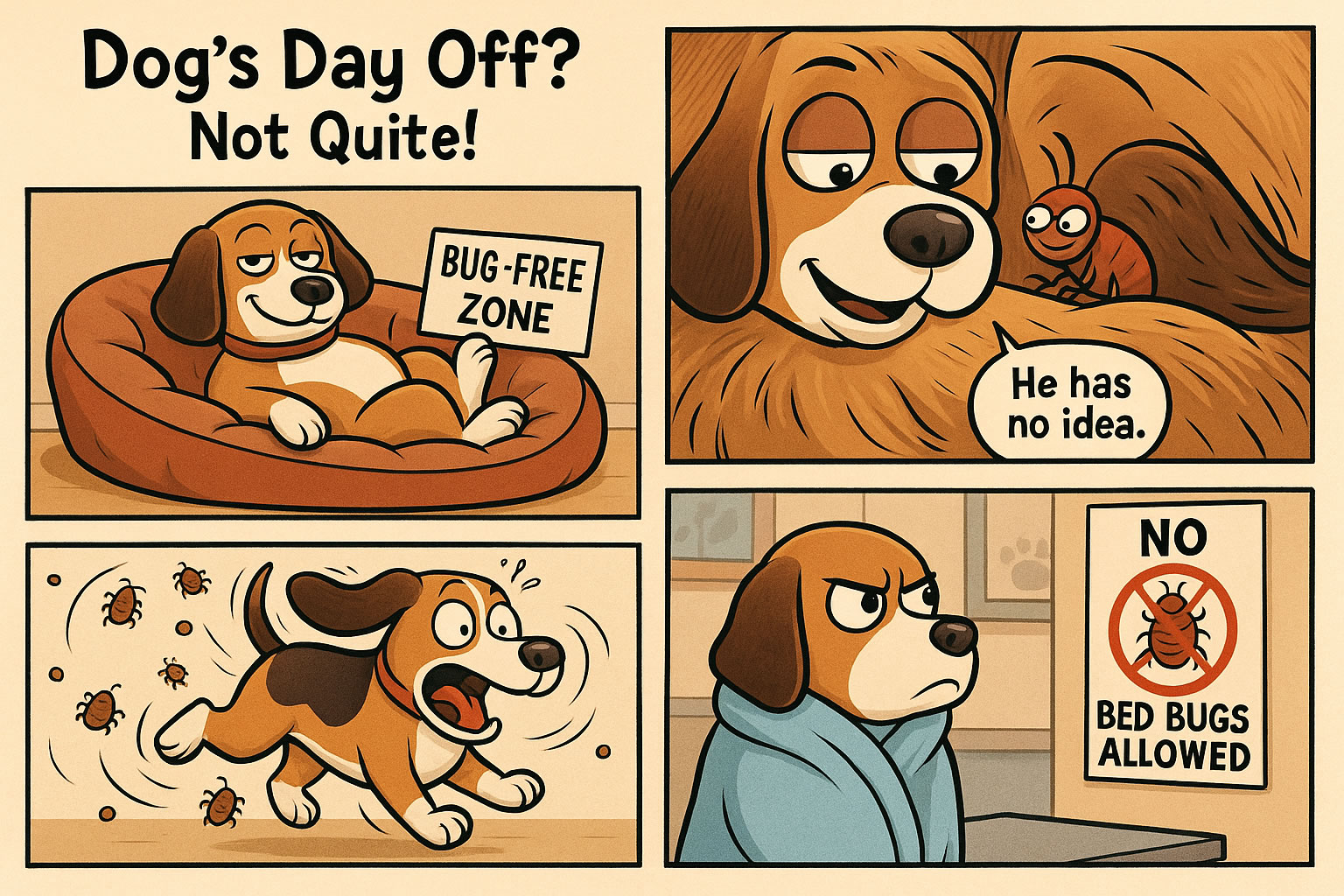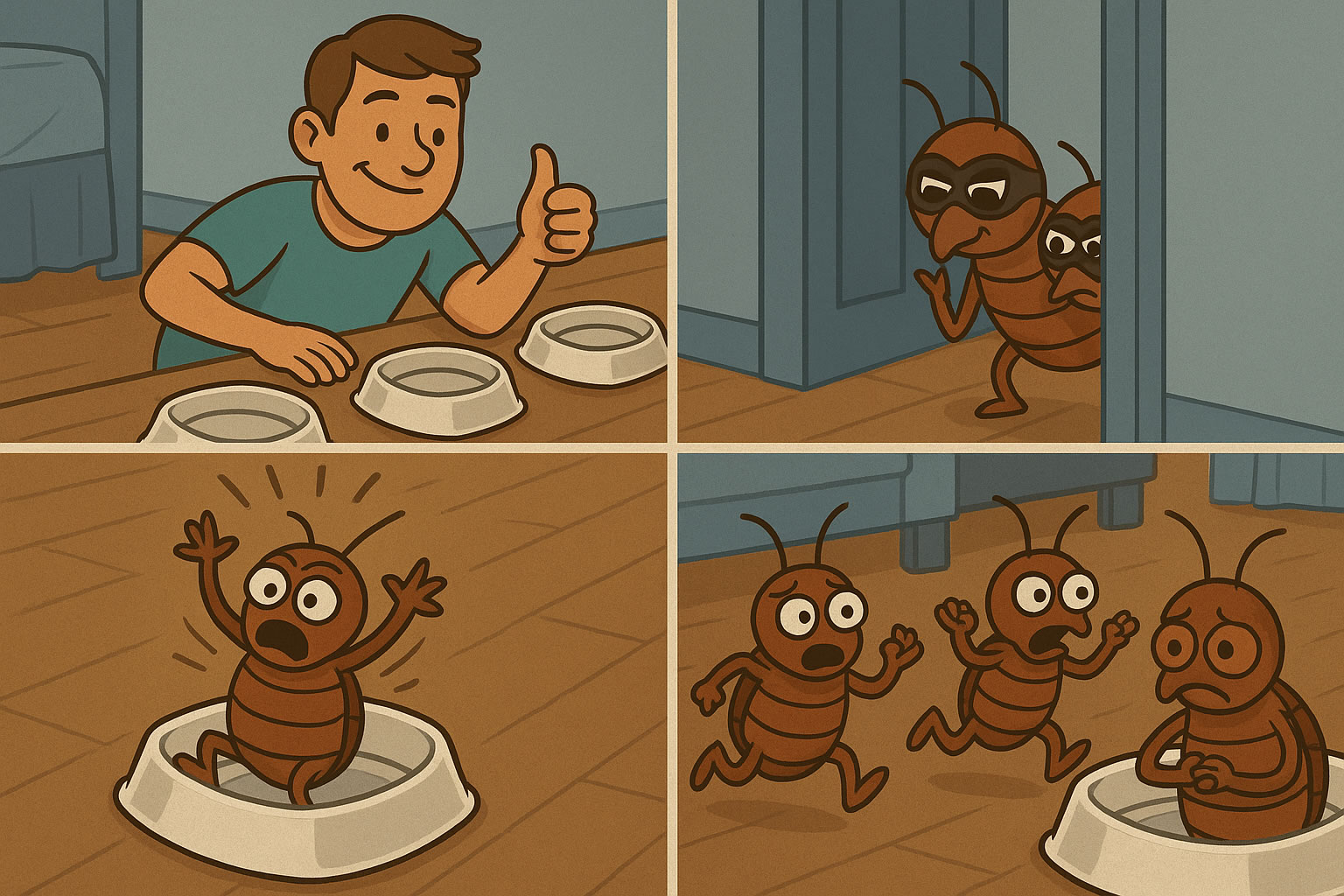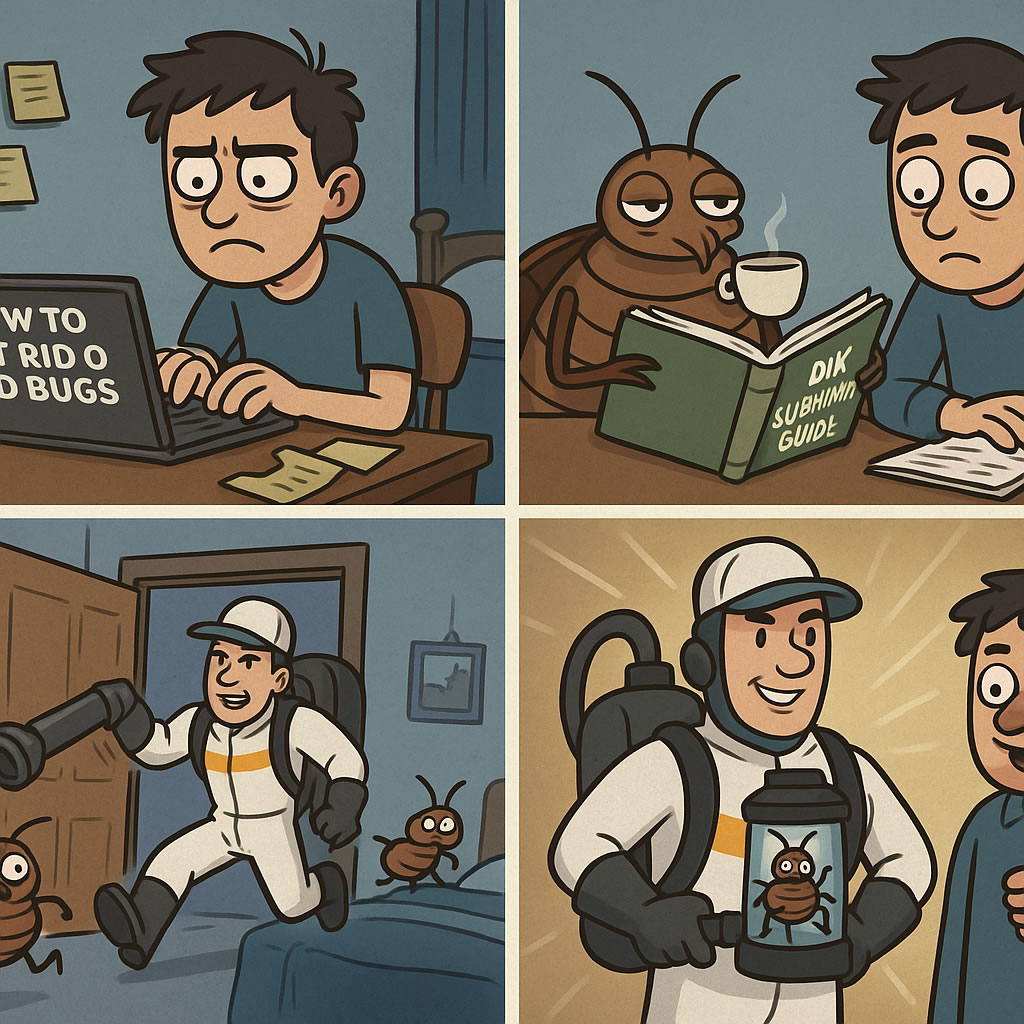Related Queries
ToggleBed bugs can survive without food for 20 to 400 days – pretty shocking, right? These resilient pests can live on clothes from several days to weeks, turning your wardrobe into their temporary home.
Your clothes can become an unexpected ride for these unwanted guests, particularly items like jackets, scarves, and backpacks. Bed bugs prefer to stay close to their food source in mattresses and furniture, but they can easily survive in clothes packed away for months.
This might sound worrying, but here’s the good news – bed bugs can’t handle high temperatures. A hot water wash followed by a high-heat drying cycle for at least 30 minutes will kill them completely.
Let’s take a closer look at everything about bed bugs and clothing in this piece, from how long they survive to the best ways to get rid of them. You’ll learn how to keep these persistent pests out of your wardrobe.
Understanding Bed Bug Survival on Clothing
Bed bugs are tough little creatures that know how to adapt to different environments, including your clothing. Getting rid of these pests from fabrics creates unique challenges.
The bed bug life cycle on fabrics
A bed bug’s story starts with a tiny egg, about 1mm – just the size of a grain of salt. Female bed bugs are busy parents. They lay 1-7 eggs each day and can produce up to 250 eggs in their lifetime. These white, rice-shaped eggs take about 10 days to hatch. The newborn nymphs must find blood right away to survive.
Bed bugs go through five growth stages before becoming adults. They need blood at each stage to shed their skin and grow. These pests can stay alive on clothing for about 10 days and lay hundreds of eggs during this time. A small number of bed bugs can quickly turn into a major problem because they multiply so fast.
How long can bed bugs live without feeding?
Adult bed bugs can survive without food for an incredibly long time. Under the right conditions, they can live anywhere from 20 to 400 days without blood. Several things affect their survival:
- The bug’s age (adults live longer than young ones)
- Room temperature (they last longer in cooler spaces)
- Humidity levels (they prefer 75-100% humidity)
When food is hard to find, bed bugs enter diapause – a state similar to hibernation. Their metabolism slows down dramatically. They save energy and use nutrients from past meals more carefully. This explains why leaving infested clothes alone for a short time rarely fixes the problem.
Temperature effects on survival rates
Temperature plays the biggest role in whether bed bugs live or die. Research shows exact deadly temperatures – adult bed bugs die at 48.3°C (LTemp99), while eggs need higher temperatures of 54.8°C (LTemp99).
Different temperatures take different times to kill bed bugs. All bed bugs die within minutes at 60°C. It takes an hour at 50°C, two days at 40°C, and nine days at 38.5°C. Adult bed bugs die in 94.8 minutes at 45°C. Eggs are tougher and can last up to 7 hours at the same temperature.
Even mild heat at 34°C can hurt their breeding and affect how their babies develop. This knowledge helps create effective heat treatments. Consistent application matters because bed bugs can bounce back when temperatures return to normal.
Do Bed Bugs Actually Live on Clothes?
Bed bugs don’t just live in beds, notwithstanding that these pests have clear priorities about where they settle down.
Preferred habitats vs. temporary shelters
We named bed bugs this way and with good reason too. They choose to live near sleeping people because humans are their perfect blood meal. These pests love to hide in mattresses, box springs, bed frames, and nearby furniture during daylight hours.
Clothes serve more as a temporary shelter than a permanent home. Your clothes could host bed bugs, but they rarely stay in garments you wear because of constant movement – these pests love staying put. These opportunistic hitchhikers catch rides on coats, suitcases, or outerwear to find new locations.
Bed bugs only hide in clothing’s seams, folds, and pockets if they must. Dark, quiet places like closets or drawers that store clothes for long periods attract bed bugs more.
Why clothes aren’t ideal permanent homes
Your wardrobe makes a poor long-term home for bed bugs:
- Movement disruption – Worn, folded, or moved clothes create an unstable environment, while bed bugs prefer dark, stable spots
- Limited feeding access – Regular blood meals matter to bed bugs, so areas near sleeping humans work better
- Exposure risk – Regular clothing use brings light, movement, and temperatures that bed bugs hate
- Breeding limitations – Bed bugs lay eggs in stable places like mattresses, wall cracks, or between floorboards, not clothes
So bed bugs on clothing usually stay there briefly – either hiding or moving to new feeding spots. Clothes piled on floors or stored near infested areas face higher risks.
Bed bugs see your clothes more like a bus ticket than a home – just a way to reach their next meal or habitat.
Survival Rates on Different Fabric Types
The type of fabric your clothes are made from plays the most important role in how long bed bugs can survive on them. While no fabric keeps these pests away completely, some materials make it harder for them to thrive than others.
Cotton and natural fibres
Natural fabrics like cotton, linen, and wool each affect bed bugs differently. Cotton’s durability means you can wash it frequently – which helps keep bed bugs away. Linen lets air flow through easily, which makes it less appealing to these pests.
Wool contains lanolin, a natural substance that helps keep various pests away, including bed bugs. The way wool handles moisture creates conditions that bed bugs don’t like. Research shows that “you’ll never find bed bugs in wool mattresses” because they can’t survive well in this material.
Bamboo works really well against bed bugs. Its tightly packed fibres make it hard for pests to move around. The material also wicks away moisture and fights bacteria, which creates an environment where bed bugs don’t want to stay.
Synthetic materials
Synthetic fabrics usually give bed bugs fewer places to hide compared to natural ones. Polyester blends and nylon are tough materials that bed bugs don’t find attractive. Microfiber’s tight weave creates a barrier that these pests struggle to get through.
Synthetics like polyester don’t hold onto moisture, which makes them less inviting for these moisture-sensitive pests. Canvas and other tightly woven synthetic fabrics work well to keep bed bugs from settling in.
Layered clothing and complex garments
Clothes with multiple layers give bed bugs more places to hide. Jackets, scarves, and backpacks are more likely to carry bed bugs than simple clothing items.
These pests find it easier to hide in clothes left in piles or stored where there’s an infestation. They usually hide in seams, folds, and pockets – features you’ll find plenty of in layered or complex pieces.
Heat ended up being the best way to get rid of bed bugs from clothes, whatever type of fabric you’re dealing with. Hot water washing followed by high-heat drying kills these stubborn pests in any fabric that can take the heat.
Effective Methods to Kill Bed Bugs on Clothes
Getting rid of bed bugs from clothing needs specific methods that target these tough pests. You can destroy bed bugs at every life stage with several proven methods that work well.
Heat treatment: washing and drying
Heat works best against bed bugs on clothing. These pests die at temperatures of 115°F (46.11°C) or higher. Here’s what you need to do:
- Wash infested items in hot water for 30 minutes
- Immediately transfer to a dryer set at the highest safe heat setting
- Dry for a minimum of 30 minutes
Hot washing and high-heat drying work together to kill bed bugs that can’t survive these temperatures. A clothes steamer reaching 160-180°F can help with delicate items that you can’t wash.
Freezing techniques
You can also use cold treatment, but it needs strict conditions. Here’s how to kill bed bugs by freezing:
- Your freezer must be exactly 0°F (-18°C) or lower
- Put items in airtight plastic bags before freezing
- Keep freezing temperature steady for at least 4 days
Most home freezers don’t get cold enough to kill bed bugs. You should use a thermometer to check your freezer’s temperature before trying this method.
Professional cleaning options
Professional services can help with delicate fabrics and serious infestations:
- Dry cleaning kills bed bugs through chemical soaking and long heating cycles
- Bed bug cleaning specialists guarantee complete elimination
- Some companies bring mobile heat treatment or pick up infested clothing
These services cost about 20% more than regular cleaning because of extra steps needed.
Chemical treatments: risks and effectiveness
Chemical treatments exist but come with major drawbacks:
- Bed bugs have learned to resist common pesticides
- The chemicals often miss bed bug eggs and need multiple treatments
- Leftover chemicals might harm your health, especially on clothes worn next to skin
Heat remains your best and safest option to eliminate bed bugs from clothing.
Conclusion
Bed bugs create major pest control challenges, especially when you have infested clothing. Our research shows these tough creatures can survive without food for hundreds of days, which makes them extremely hard to eliminate.
Heat proves to be the most reliable weapon against bed bugs. High-temperature washing of clothes with thorough drying cycles kills these pests at every life stage. Some fabrics might give bed bugs temporary shelter, but none can protect them when temperatures rise above 48.3°C.
Chemical treatments often fail because bed bug populations have grown resistant. Professional cleaning services are a great way to get help with delicate items or severe infestations. Heat treatment remains the safest and quickest way to clean most clothing items.
This understanding of bed bug behaviour and elimination techniques helps protect your wardrobe from these stubborn pests. Quick action at the first sign of infestation makes a difference. Regular hot washing and drying of potentially exposed clothing should be your top priority to prevent future problems.
Pest Control Henlow Camp – Pest Control Sharpenhoe – Pest Control Westoning

